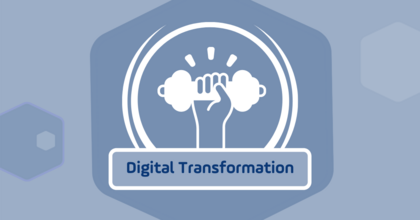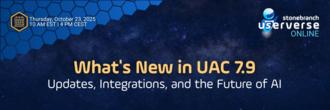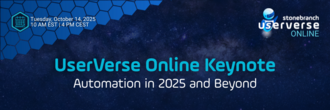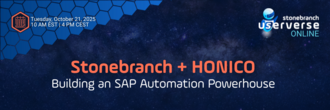Most Digital Transformations Fail. How to Succeed?
Discover how a modern service orchestration and automation platform (SOAP) can be a core enabler for your digital transformation.

Executives talk about digital transformation as if they can simply press a button and make it so.
What you don’t hear them talk about: somewhere between 70–80% of digital transformations don’t achieve their objectives, according to research from consultants like BCG and McKinsey.
By nature, transformation is risky and disruptive. The failure rates of digital transformation are daunting. But there’s no way to hide from it; BCG also reports that 80% of companies plan to accelerate their companies’ digital transformations.
A statistic like that is striking enough make any IT professional want to hide under their desk, kitchen table, bed, or wherever you’re working these days. But you can’t. You just know you’re going to be one of the people who has to make the transformation happen.
Get on the Same Page
The executives have set the vision. They’ve pulled together a team to drive the digital transformation. (Surprise, you’re on it.) If your company is like most others, your digital transformation is going to be an expansive, enterprise-wide effort to digitalize operations.
According to Gartner, digitalization is the use of digital technologies to change a business model and provide new revenue and value-producing opportunities.
In other words, digitalization equals technology… and lots of it.
McKinsey’s research shows that organizations with successful transformations deploy more modern technologies than their less successful counterparts. These modern technologies include cloud-based services, mobile internet technologies, big data and big data architecture, internet of things, artificial intelligence, and machine learning techniques, among others.

Find a Way to Make IT Work Together
With so many new, modern technologies entering your IT ecosystem — likely spread across on-premises, cloud, and containerized microservice environments — a traditional approach to IT automation and integration just isn’t going to cut it. It’s your job to make these technologies work — and work well together. To be more precise, you need to:
- Connect your new platforms and your traditional systems too.
- Work in real time, at the speed of business.
- Use secure agents and APIs to connect apps, not glue code.
- Centralize management of automations and integration.
- Increase access to information across data sources.
- Empower business users, developers, and others to become citizen automators.
Many applications in your new technology stack will offer some built-in capability to do some of these things. It’ll be tempting to go with what’s readily available. But it’s a false simplicity; it forces a reliance on tribal knowledge to know which automations live where or what application initiates which integration. It’s simply not sustainable or scalable. There’s a better way.
Creating a Solid Foundation with a SOAP
As a foundational enabler to digital transformation, a SOAP like the Stonebranch Universal Automation Center (UAC) helps connect the dots between various platforms and applications to simplify your transformation and increase your chances of success.
The UAC makes your life easier by using event-based triggers to automate workflows across applications throughout your hybrid IT environment. It also reduces complexity by allowing you to easily manage and orchestrate end-to-end IT workflows from a single, unified view within a centralized platform.
McKinsey calls out two specific tools and technologies as key success factors. Companies with successful digital transformations were two times more likely to:
- Implement digital tools to make information more accessible across the organization.
- Make self-service technology available for business end-users.
SOAPs are designed to help enterprises tackle McKinsey's success factors. Because a SOAP can integrate with any application, it breaks down automation silos and keeps the data pipeline flowing. These integrations also empower citizen automators throughout your business to initiate sophisticated workflows from Teams, Slack, or ServiceNow — without any support at all from ITOps.

Summary
No one sets out to fail. With the help of a SOAP like the Stonebranch UAC, you set your odds in favor of a successful digital transformation. And you stand up to take credit for your role in making the digital transformation a success… Instead of hiding out until it’s over.
Start Your Automation Initiative Now
Schedule a Live Demo with a Stonebranch Solution Expert





